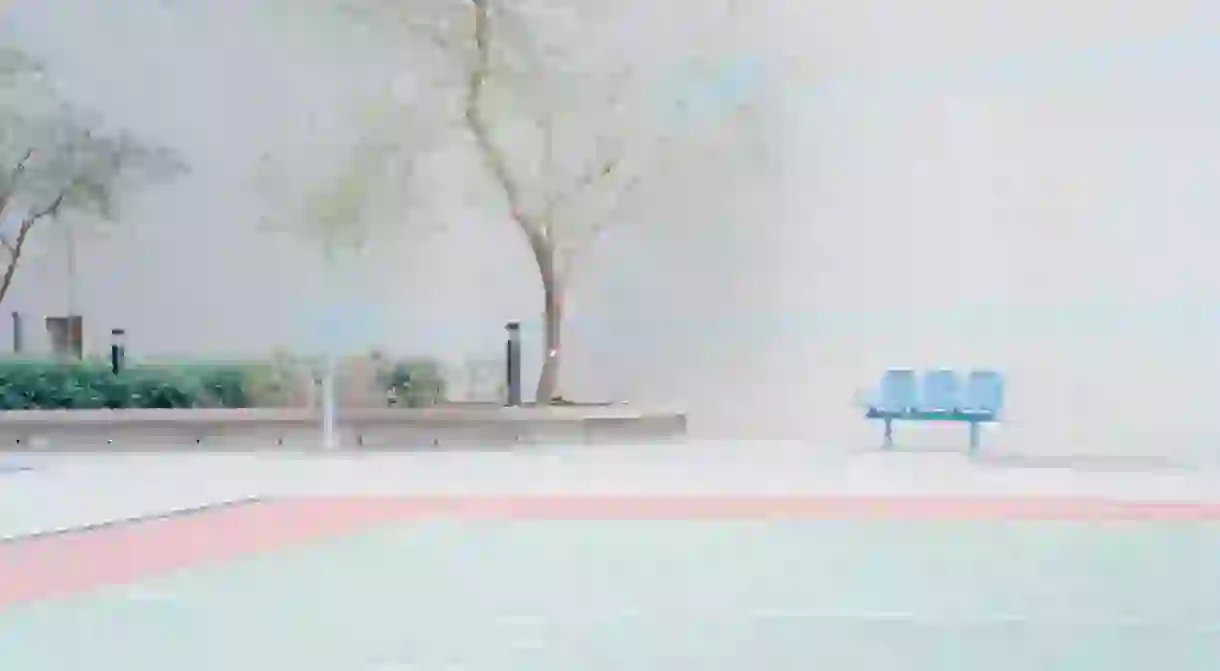The Desolate Beauty Of Ward Roberts' Basketball Courts: An Interview

Ward Roberts is a photographer based in New York. Having spent his childhood in Hong Kong and Australia, he went on to attend the Parsons School of Design in New York. In 2012, he released Courts, a study of outdoor basketball courts in Hong Kong. His whimsical, pastel-hued shots capture the nostalgia of childhood. We spoke to him about the project, as well as its newly released sequel, Courts 02 (2016), in which we see Roberts returning to Hong Kong, as well as expanding his project to Bermuda, Hawaii, New York and Melbourne.

How did your passion for photography begin? Did your childhood in Hong Kong play a role in how you see and photograph the world?
I suppose photography basically started as a bit of a vice. It started when I was in my last few years of high school. I was going through a very difficult time, not just academically but with personal and family issues as well. Photography became a way to distract myself from the world – so that’s how it started.
Hong Kong’s always felt like a second home, or third home to me. I grew up there from about age three to age eight, and I’d often go back during the holidays to visit my father, so there’s definitely an attachment to the city. I’m a very curious photographer, and I like to think that my curiosity started in Hong Kong, with the layers of the buildings, the colors, the architecture, what was on the rooftops of different places. I had a passion to explore. That’s how I would say growing up in Hong Kong influenced my work.

How did the Courts series begin?
I don’t like using the word ‘organically,’ but it just sort of evolved. I didn’t wake up one day and think, ‘I need to go and photograph basketball courts in Hong Kong.’ It started with that curiosity of different spaces in Hong Kong. I just found myself really drawn to a lot of the sporting courts. I played a lot of sports in Hong Kong and in Australia growing up. It just felt like a part of my DNA to be drawn to these spaces.

Do you see yourself as documenting something through these images?
In a sense, but when I started this series I didn’t view it as documenting the courts. I wanted to create a space for these locations to live, to have a bit of a voice, if you will.

Do you see it as a tribute to your own childhood?
There is an element of that, because I was very active growing up. But there’s also the fact that there isn’t as much emphasis on being active as there used to be. There are so many other things to do, so many different distractions, why would you make the time to play a game of basketball or a game of tennis?
That’s interesting, because there aren’t any people in your shots.
Yeah, it’s reminiscing on the old days.

What made you decide to follow the first series with the second?
After the first book sold out, I didn’t really plan on doing another one. But I kept getting a lot of requests for copies of it, even years later. I also felt I hadn’t really done as much as I could have. I didn’t explore as many locations as I would have liked to. The first book was somewhat of a rush, whereas with this one, I had the opportunity to explore Hong Kong in much more depth.
Earlier this year I went to Hong Kong for about two months, documenting different locations. I had to stick to a schedule. It did feel a lot more like a project or a job, whereas before, it was more organic. This definitely felt like, ‘I’m on a timeline, I need to explore as much of this city as I can, and this is where I’m going to look.’

What was your process for shooting this series? Did you have to ask people to clear out so you could shoot?
This time, I obviously had a much better process for finding these locations and documenting them, but the language barrier was still a pretty big issue. There were quite a few locations I wasn’t able to capture because they were in schools. As I’m sure you’re probably aware, they’re very particular at schools in Hong Kong. They don’t like anybody who isn’t a student or a teacher at these locations. I was able to get a few schools, but there’s still a large handful that I wasn’t able to.
I ended up going to a lot of local estates. You get an eye for spotting them. I’d follow the pastel buildings and walk towards them, with an awareness that there will most likely be a court within that vicinity.

I imagine that most basketball courts looks quite similar. Was that ever a problem for you in trying to create distinct photographs?
Yeah, the second book definitely was a lot tougher. It basically depended on the surrounding buildings, and whether I could get more height or a different angle. Sometimes I tried to stand on a bench or seat or something. But I was restricted to the location, so it was a challenge. In the end, I had about 100 courts that I curated down to 30 or 40, so I made sure it wasn’t too repetitive.

What’s next for you?
I have another book coming out next year that was shot at Rockaway Beach in New York. I spent about two years shooting it. It’s a documentation of the beach being rebuilt after Hurricane Sandy.














